Playtest and Iteration
Once The base design and rules had been documented, and the prototype boards an tiles were created, I began to playtest the game. My first playtest was just myself setting up both mazes and then solving them as each player. Obviously knowing how each maze was set up would skew my results for many aspects of the game so for these tests I focused on settling on the movement of the pieces and the effects of the obstacles. After experimenting with a few different numbers of movement I landed on 4 spaces being a good number to have for each turn, this would make certain obstacles more impactful without giving players so much movement that they can finish the game too quickly.
The obstacles within the game were simple to design around with one exception. The SLOW space proved to be the most difficult to implement due to the nature of the movement system at the time and how its effect needed to be phrased. I struggled with this specific piece into the printing phase and needed to make some minor adjustments to the board and rules after the board and box had already been printed.
For further playtesting I gathered up my materials and met up with a colleague of mine to run several games at a local coffee shop. While introducing the game to my tester I made notes on phrasing of the various rules that I would later use in my rules sheet at print as well as various other notations. Several games were played, timed, and recorded to provide as much data as possible. I also gathered my tester’s opinion often and noted their reactions.
Overall the games lasted between 15-20 minutes in length each, which I was very happy with. Unsurprisingly the first game was a bit slow and some of my initial explanations of the rules cause a little confusion. Luckily after one round of the game the tester had a complete understanding of the mechanics and was eager to play more rounds.
It became evident that beyond the board strategy that the strength of the game came from its fast pace and replayability. The fact that players can pick up the game and play around four games in an hour leads is valuable. Beyond that the game also led to changes in strategy between games where players did not want to reuse the same maze setup more than once to avoid their enemy predicting obstacles and player-to-player conversations during play revolved around trying to bluff one another or probing for information about the mazes.
Testing in this fashion became very useful and several adjustments to the tile layouts would be made to get a good balance of the differing obstacles to allow for a wide variety of obstacle set ups and combinations.
While documenting the playtest and recording results I took pictures at the end of each turn and noted the moves taken each time. The image carousel at the bottom of this section contains an example of this on a playtest on the smaller of the two boards I had made.
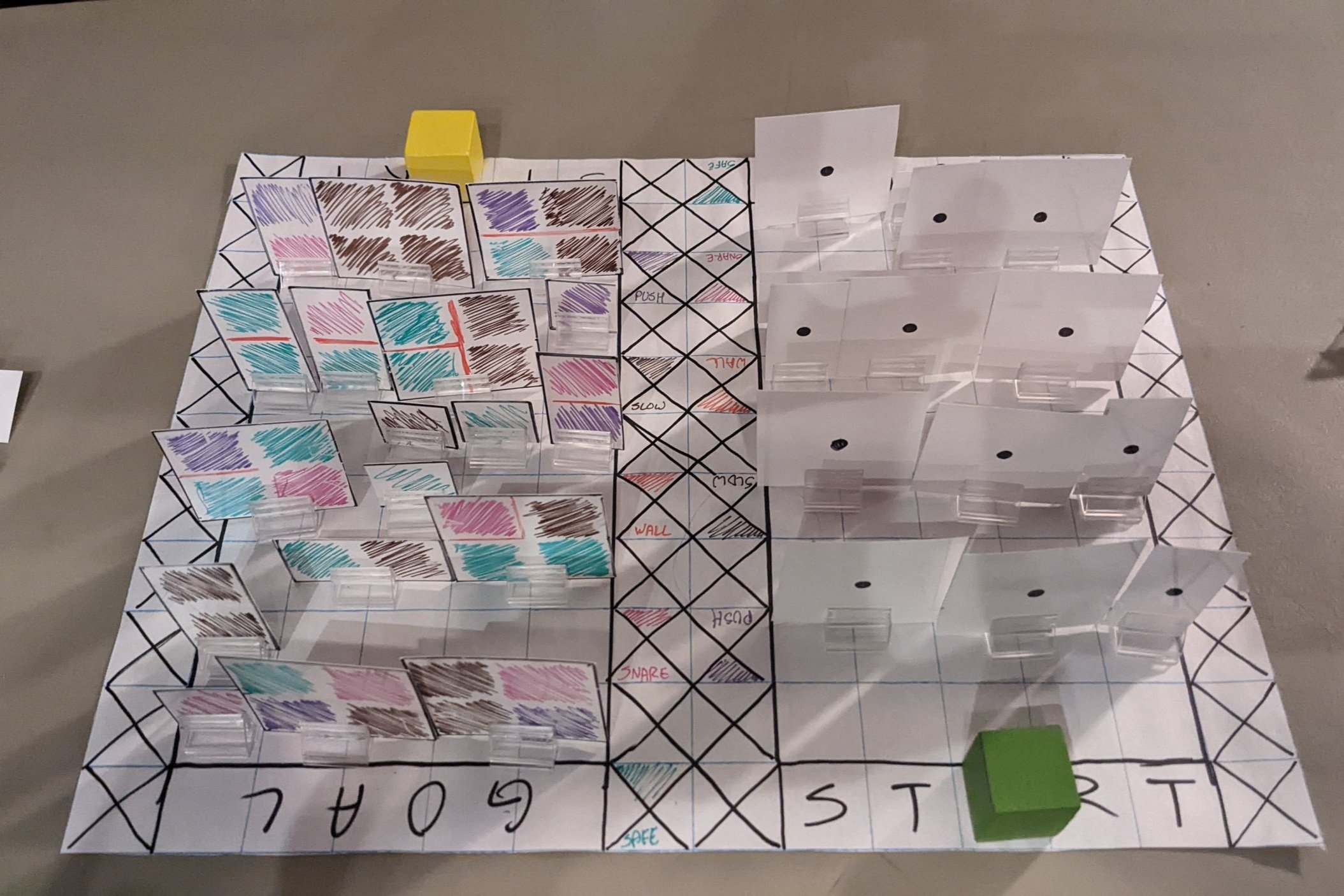
Turn 0 - Green
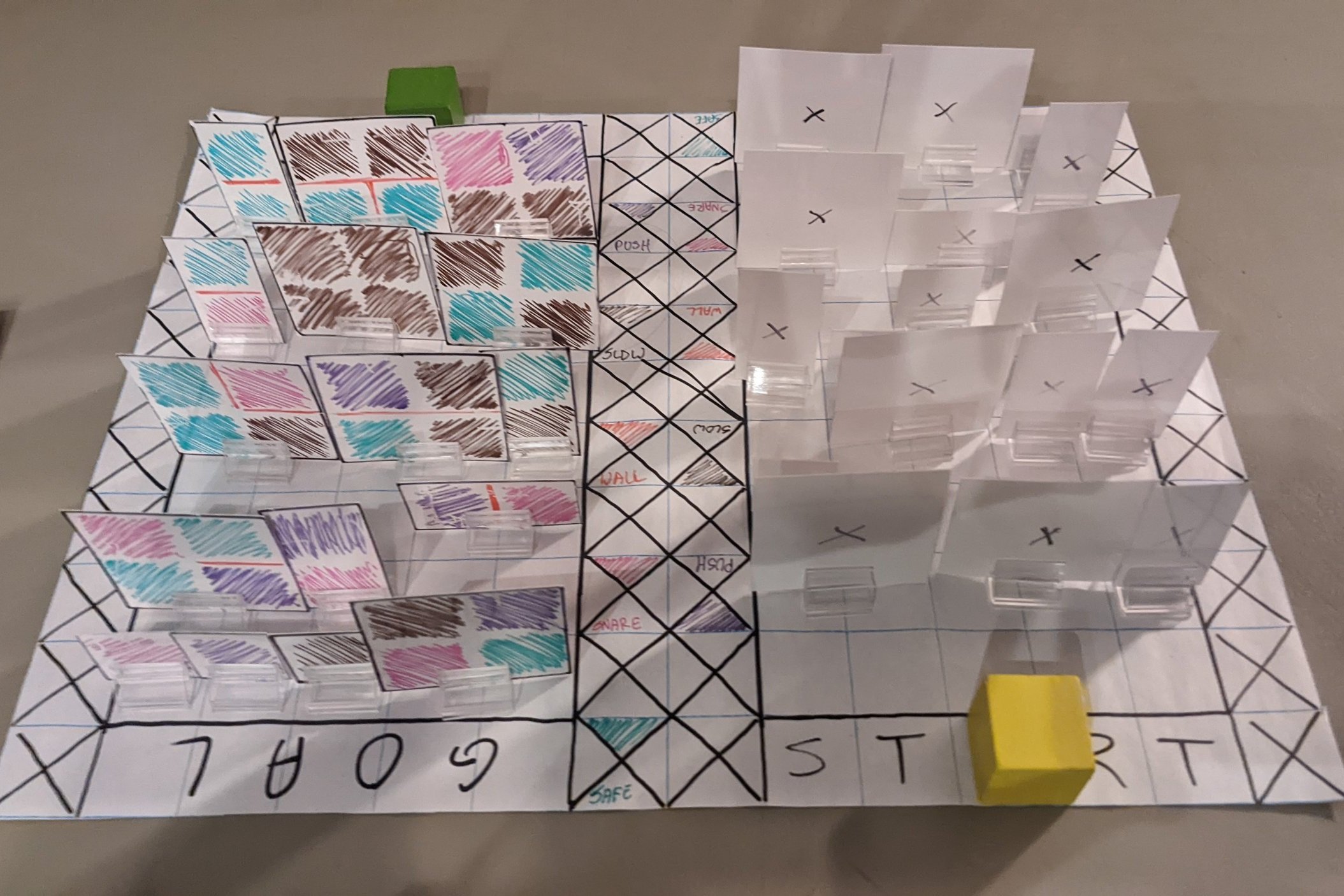
Turn 0 - Yellow
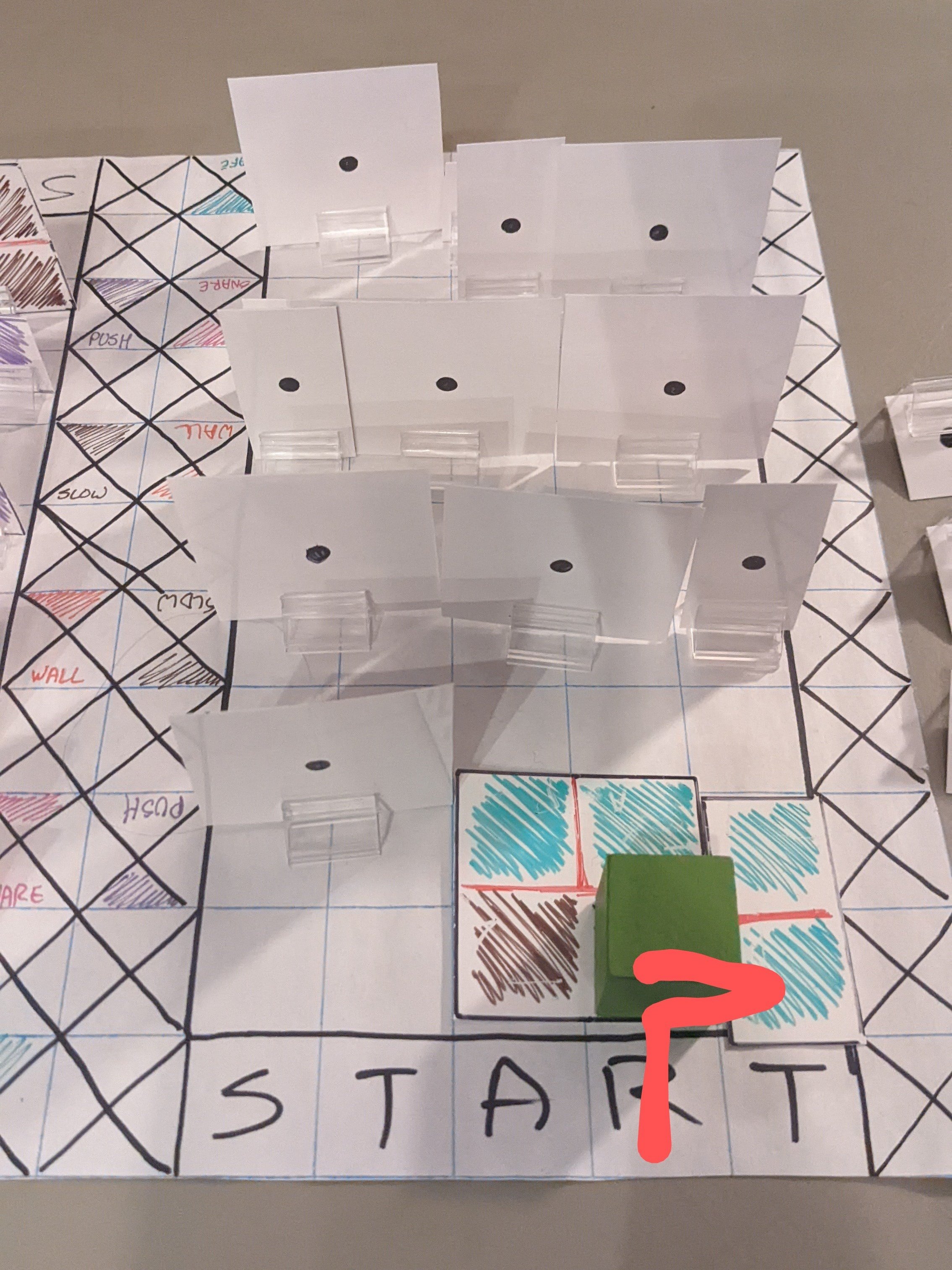
Turn 1 - Green
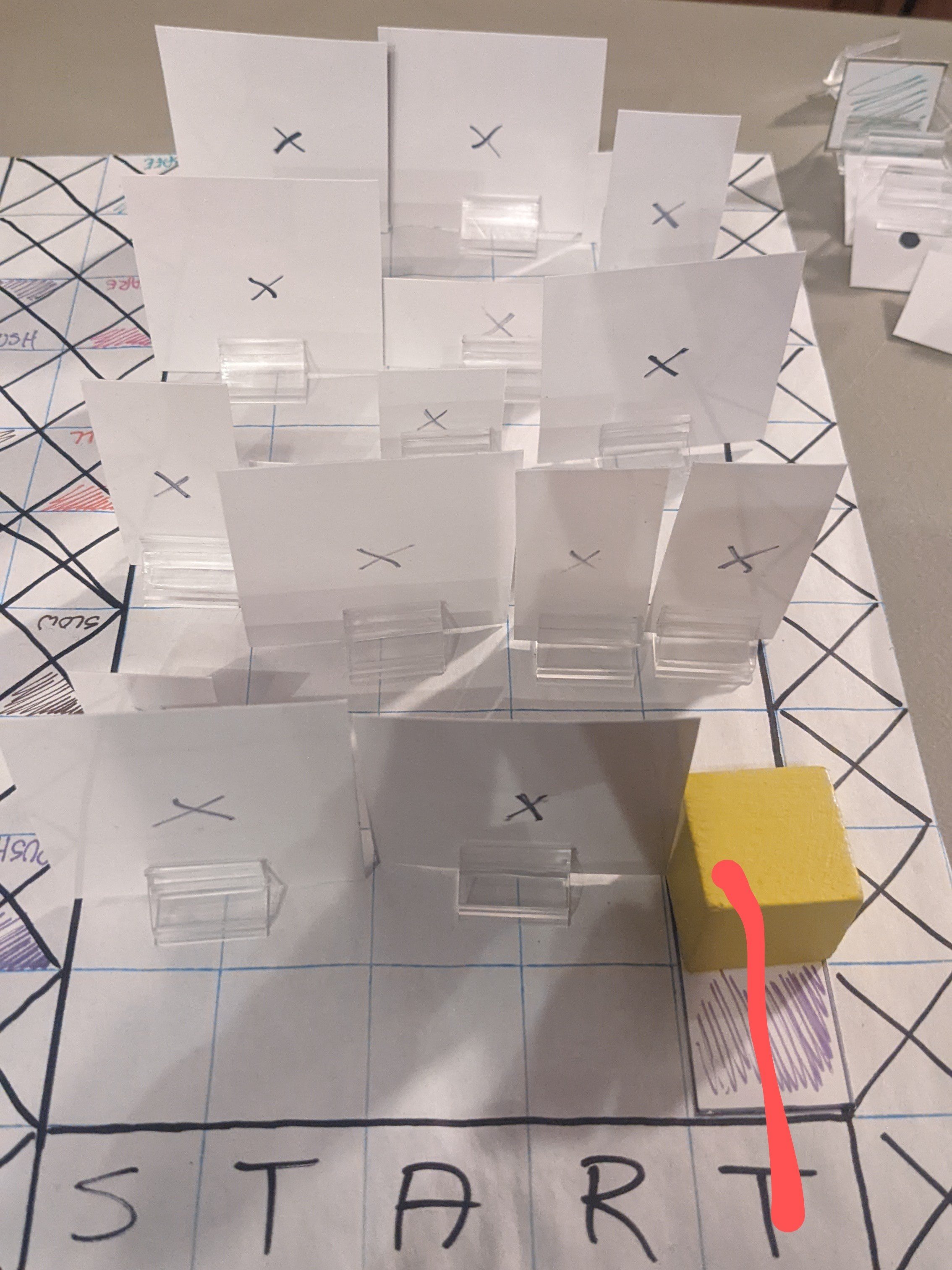
Turn 1 - Yellow
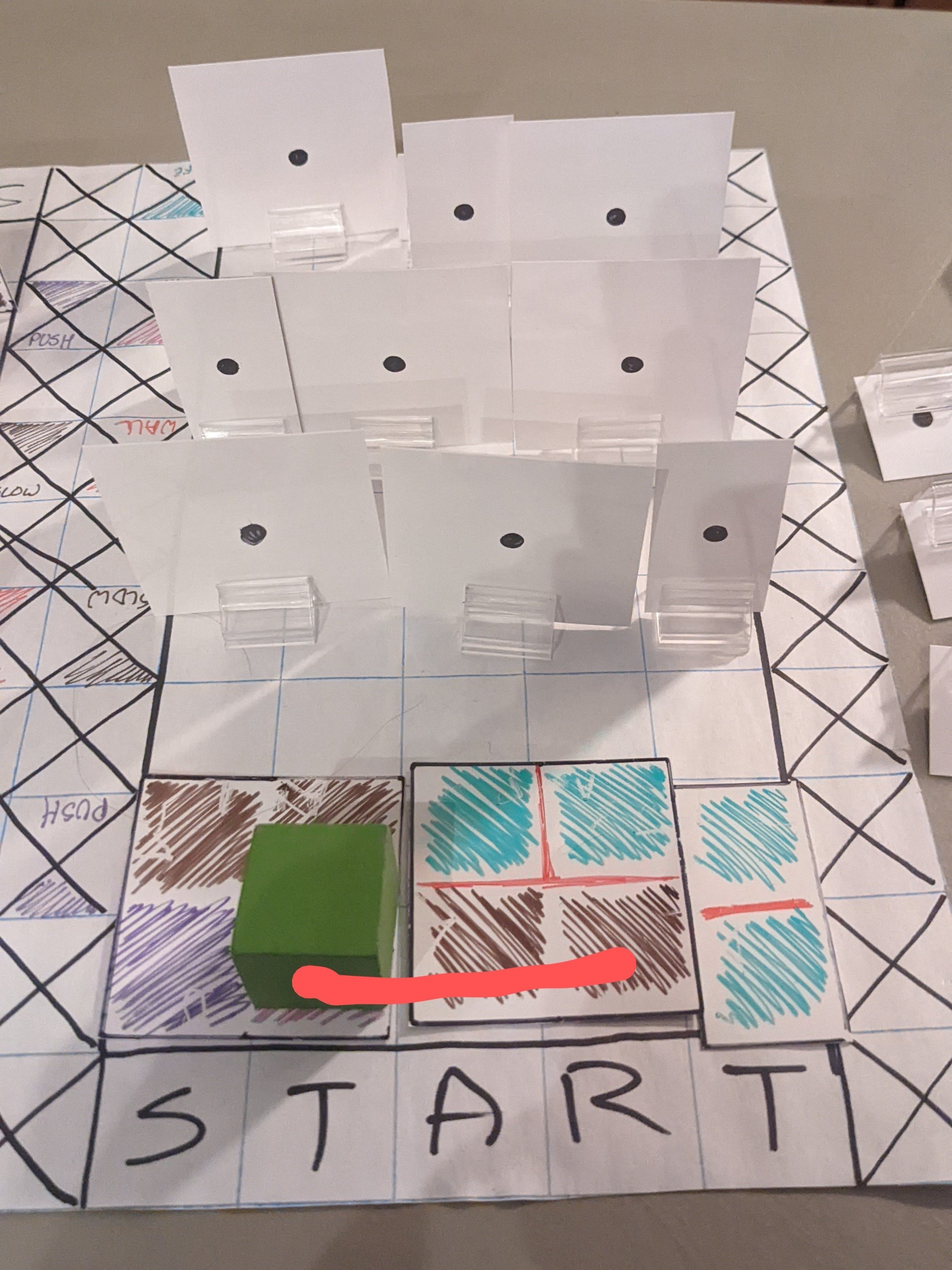
Turn 2 - Green
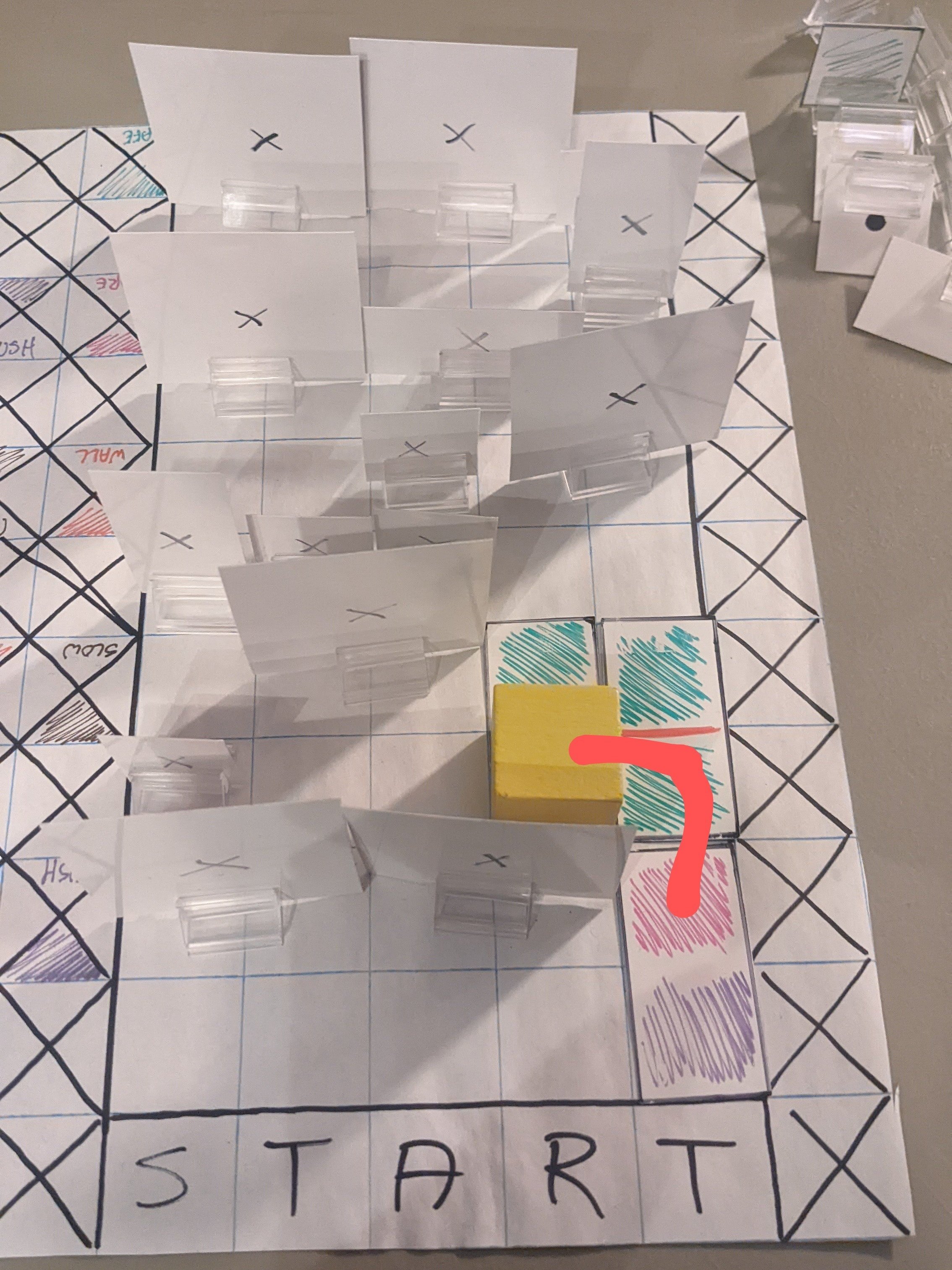
Turn 2 - Yellow
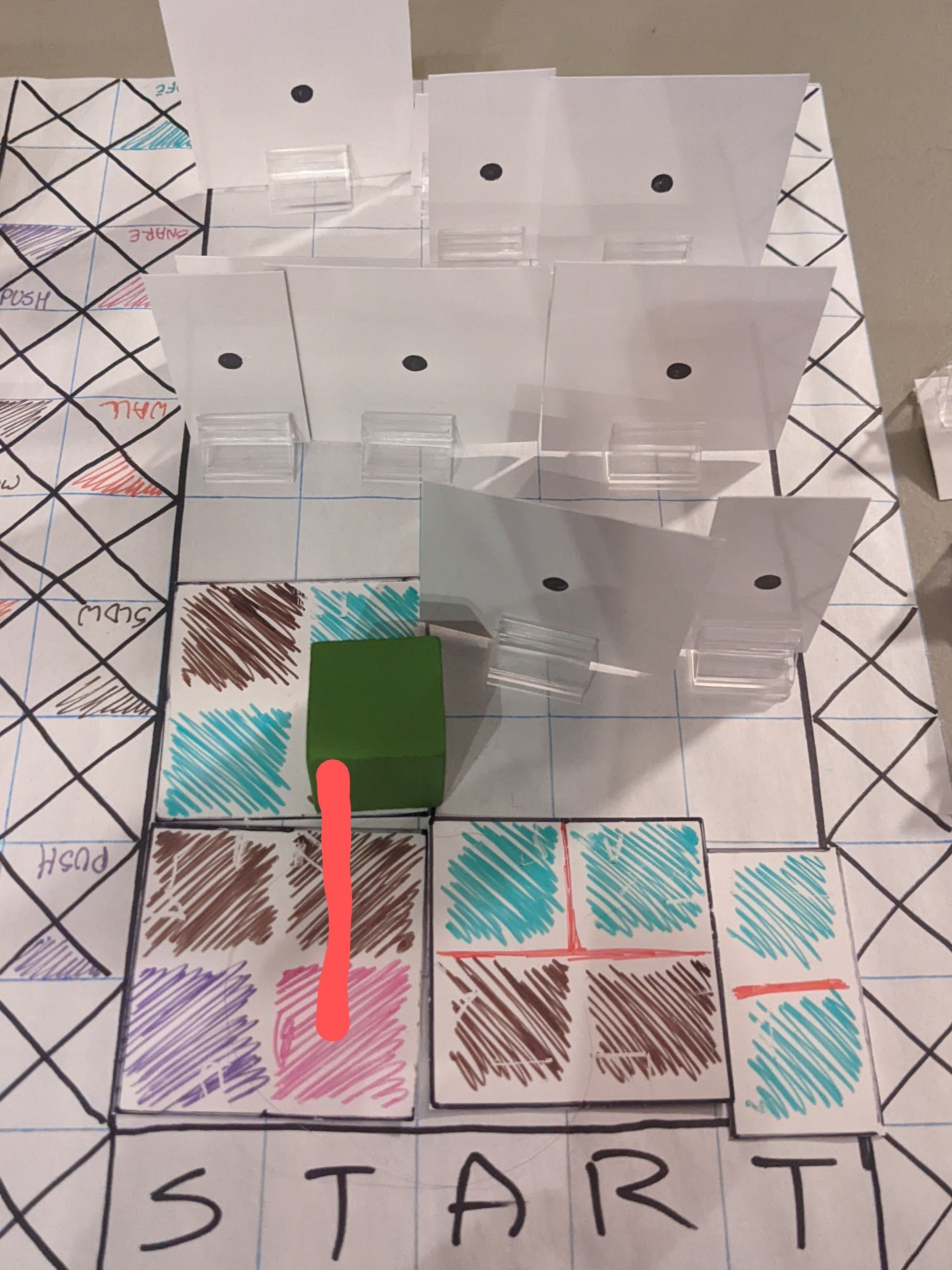
Turn 3 - Green
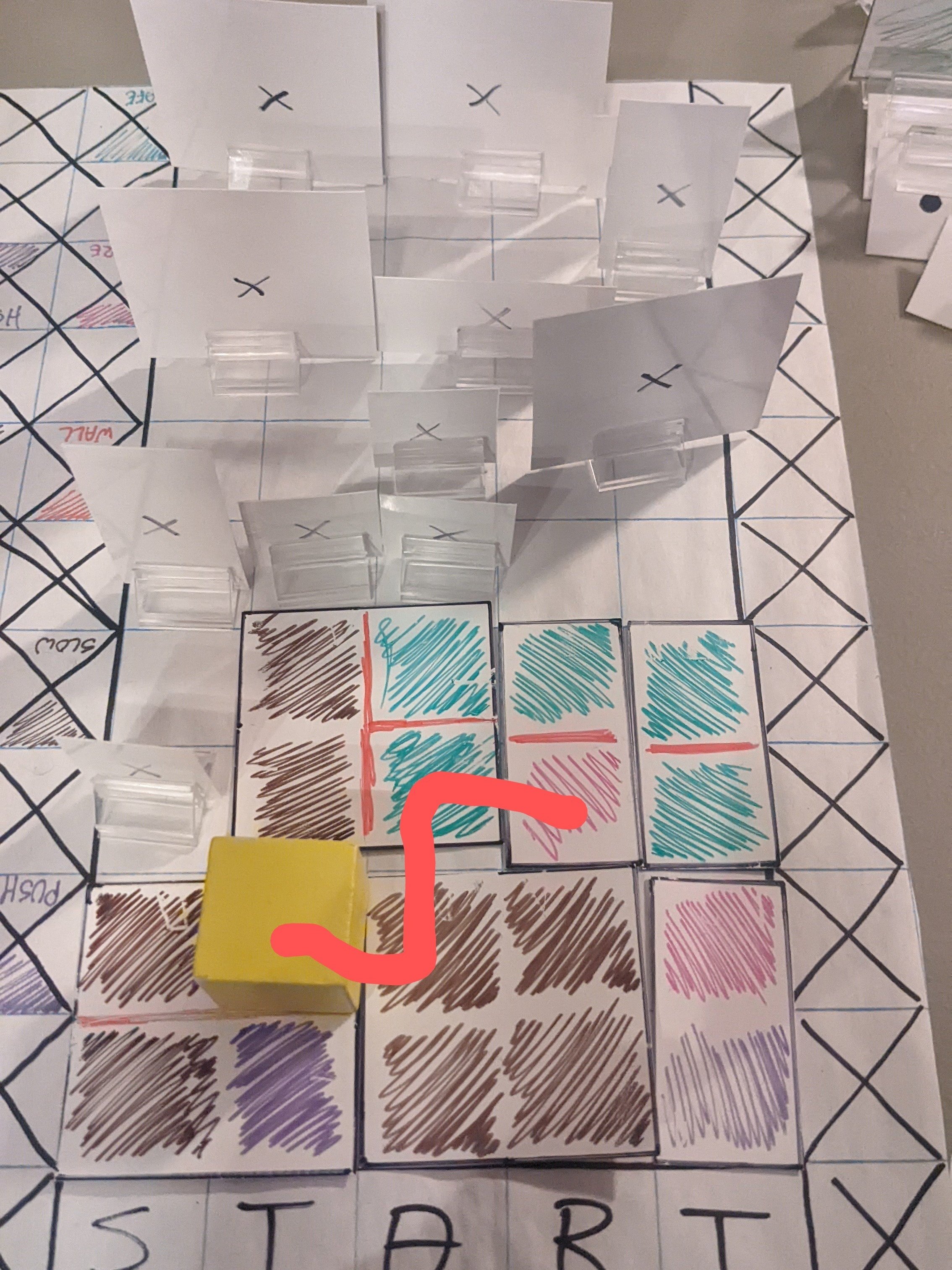
Turn 3 - Yellow
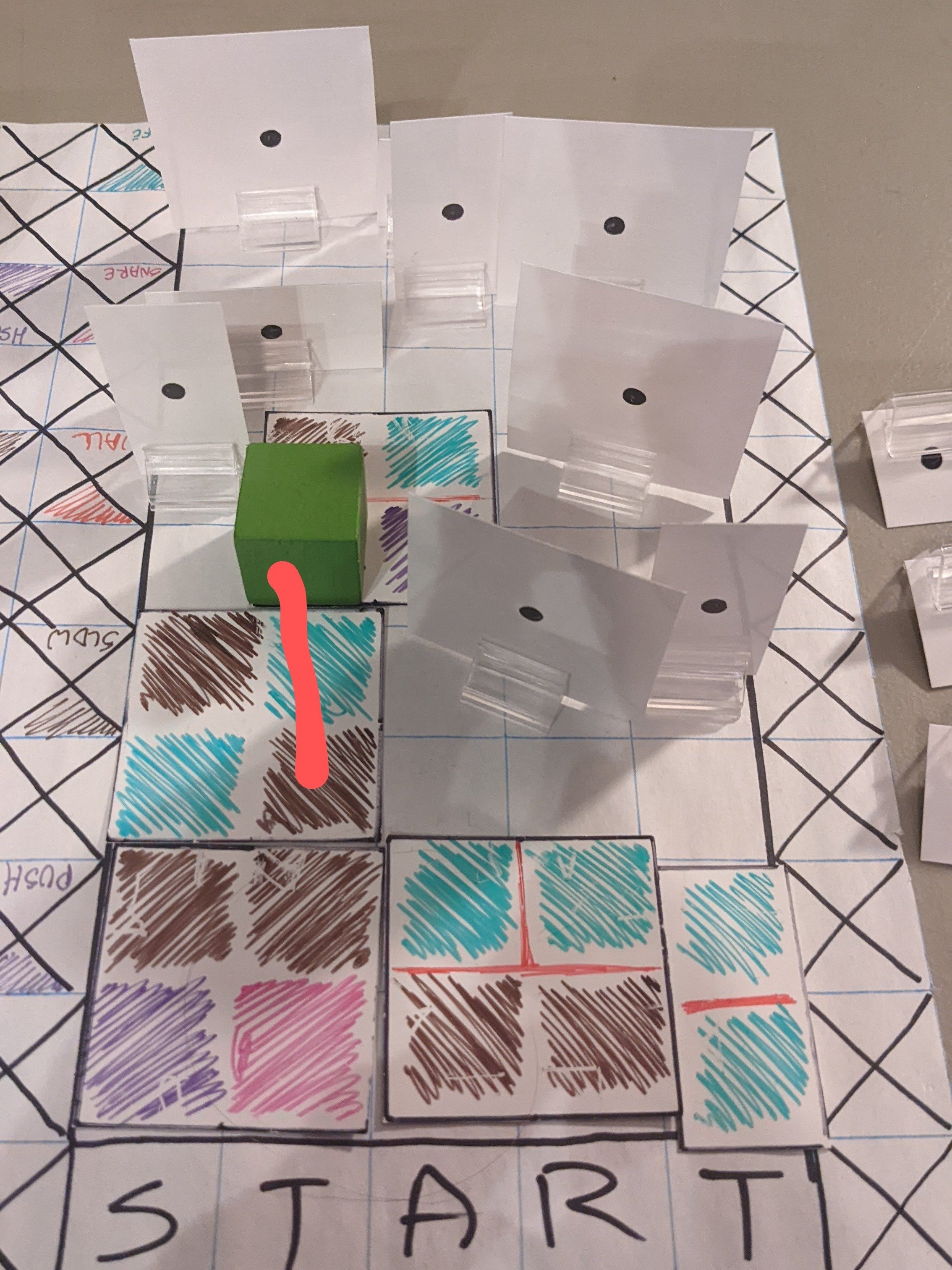
Turn 4 - Green
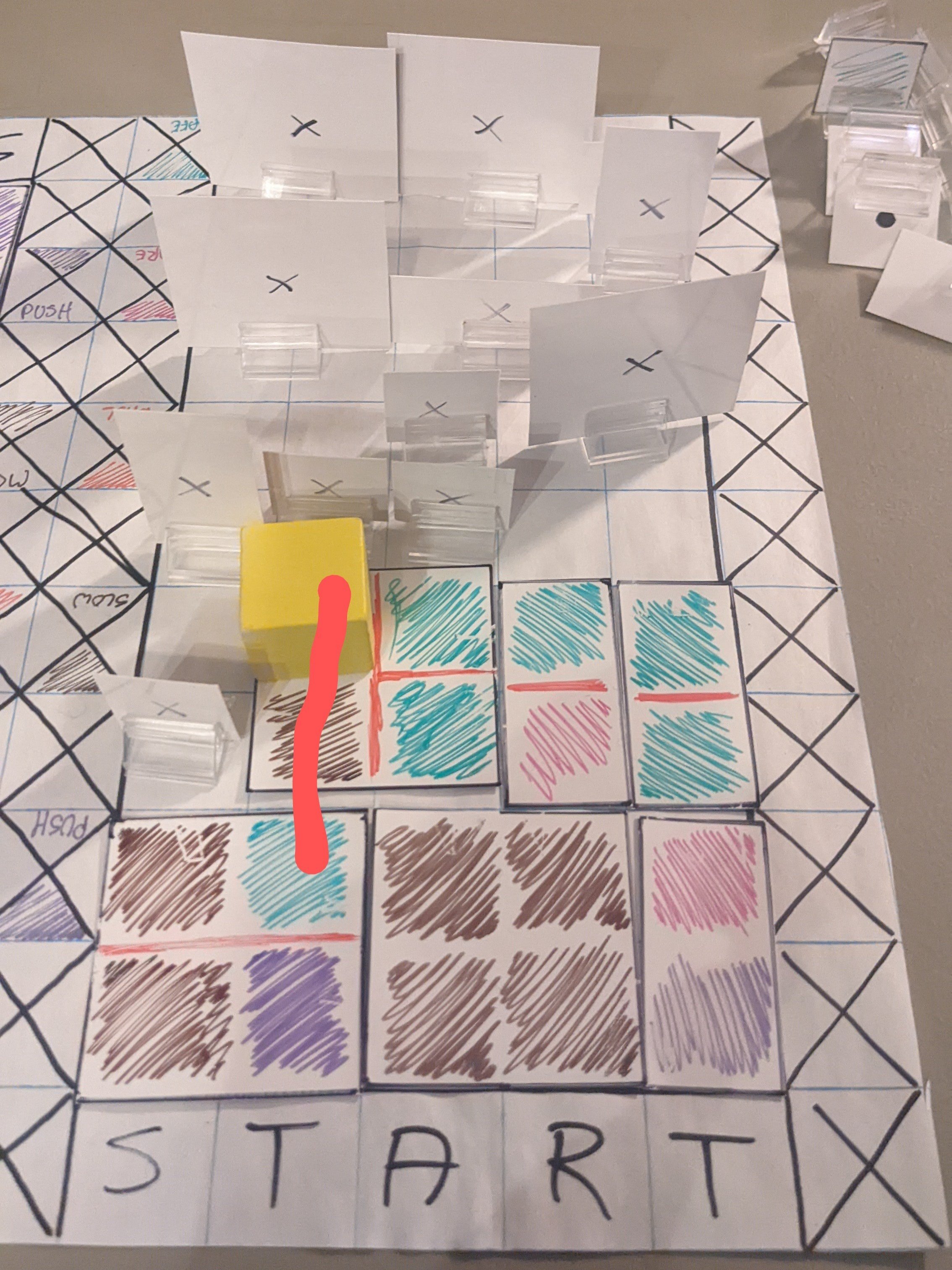
Turn 4 - Yellow
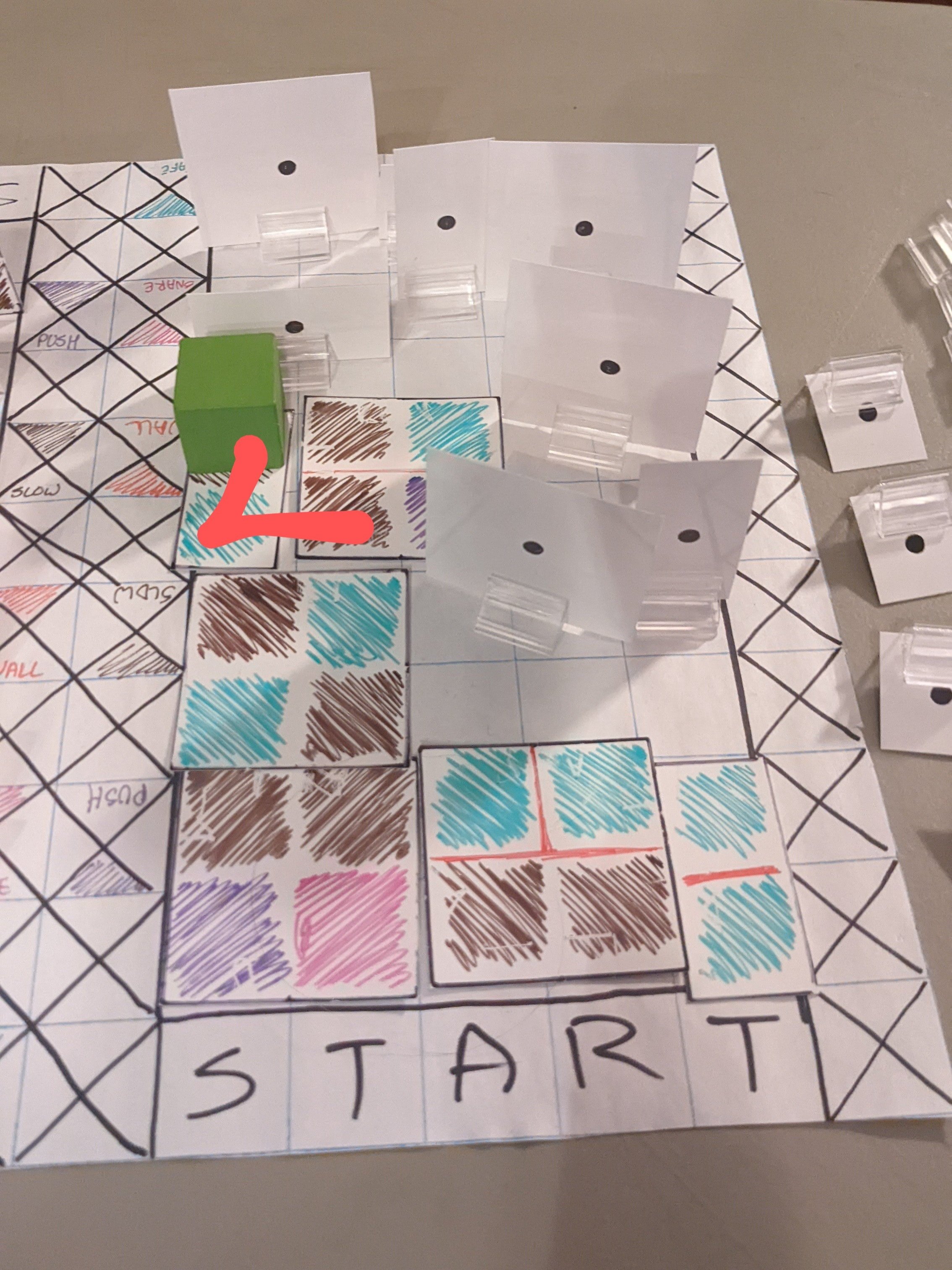
Turn 5 - Green

Turn 5 - Yellow
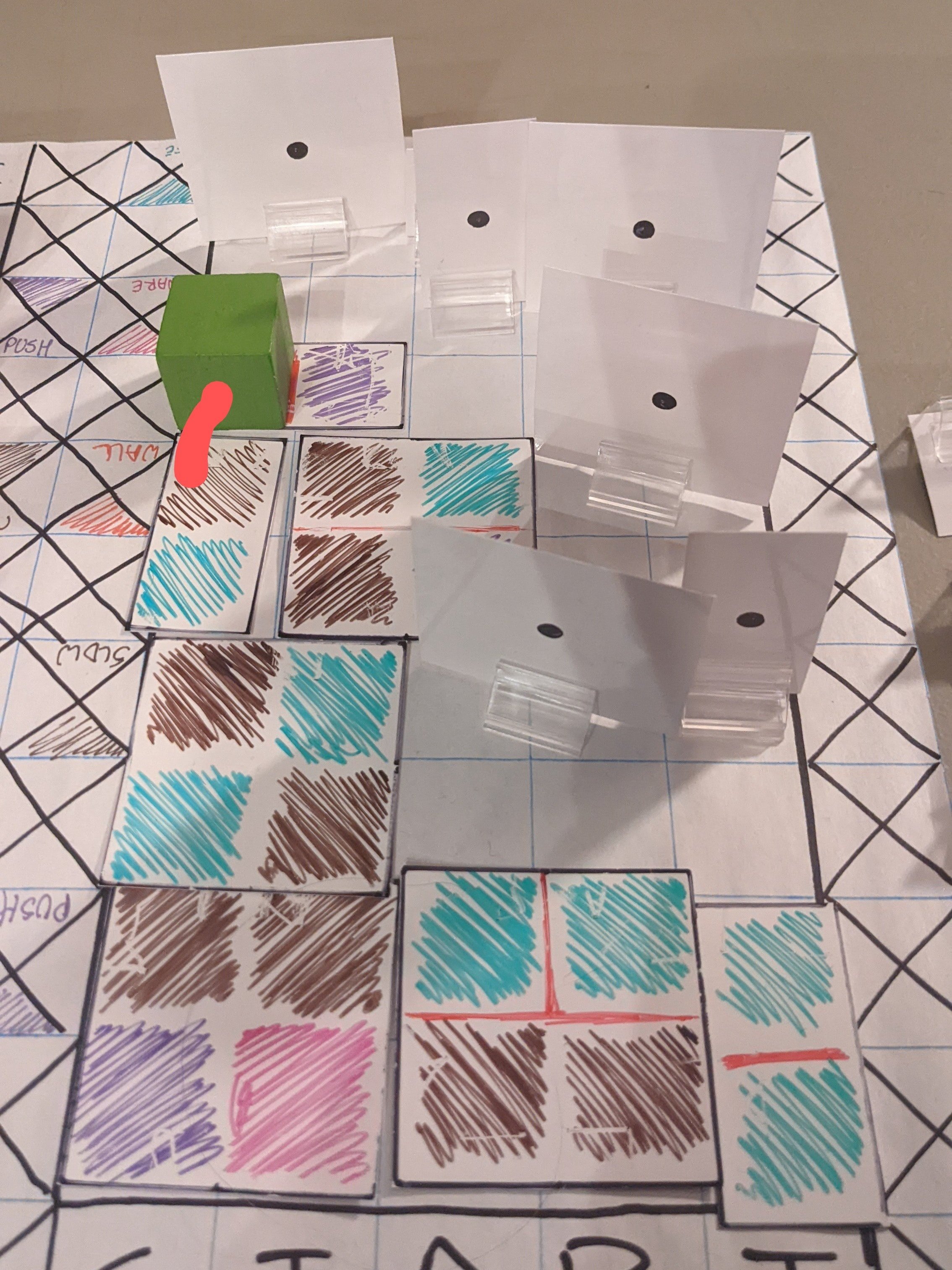
Turn 6 - Green
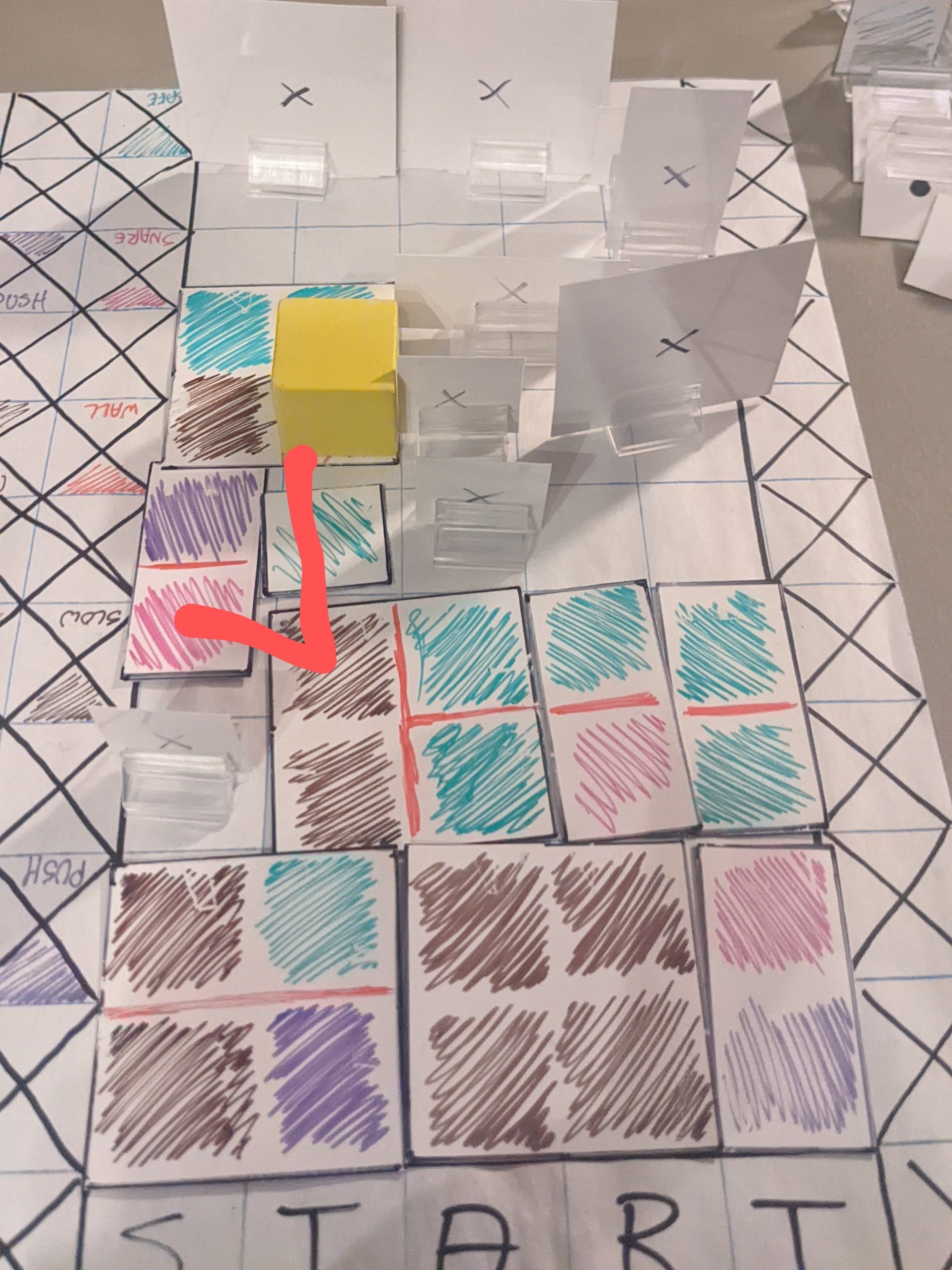
Turn 6 - Yellow
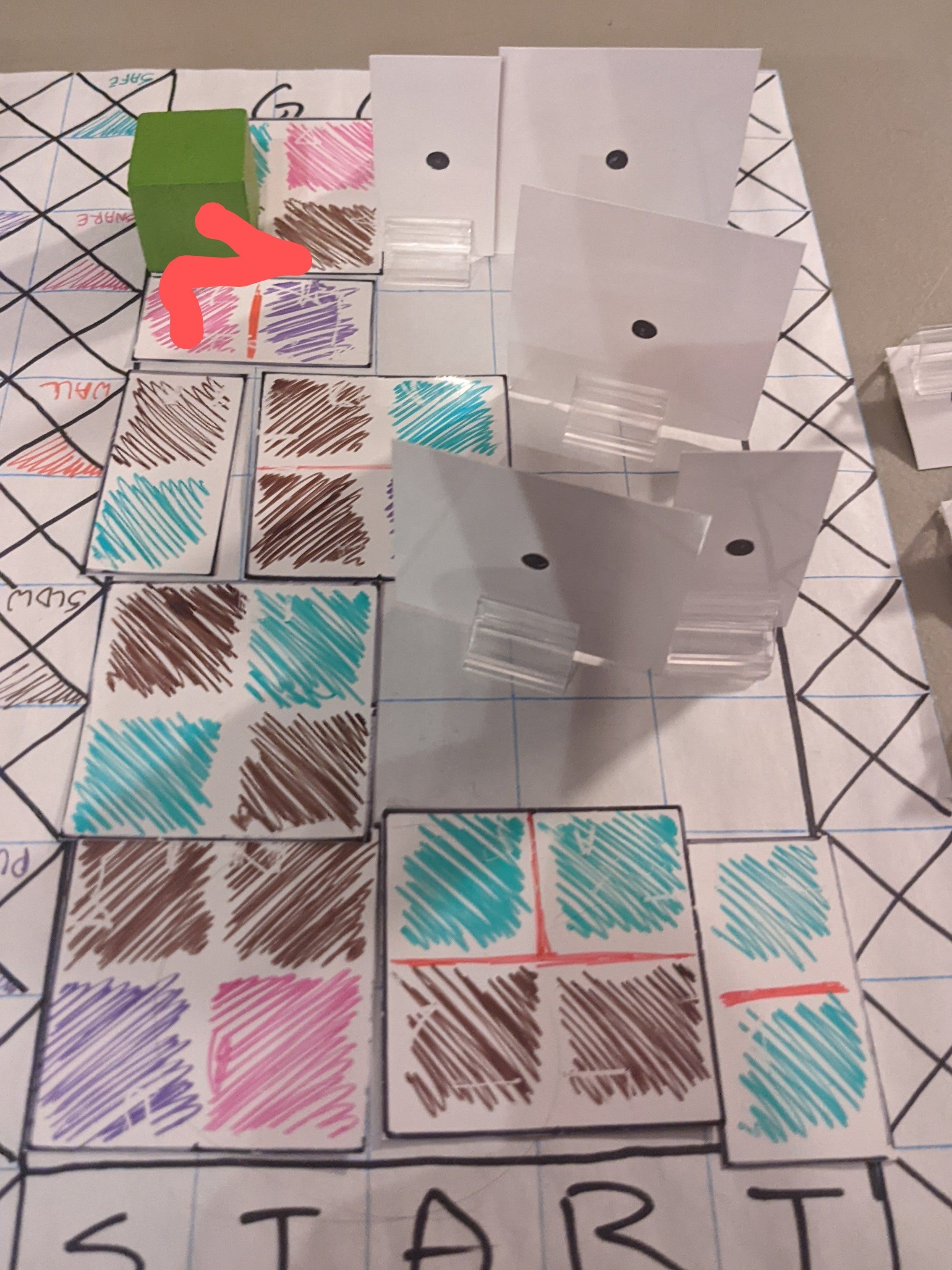
Turn 7 - Green
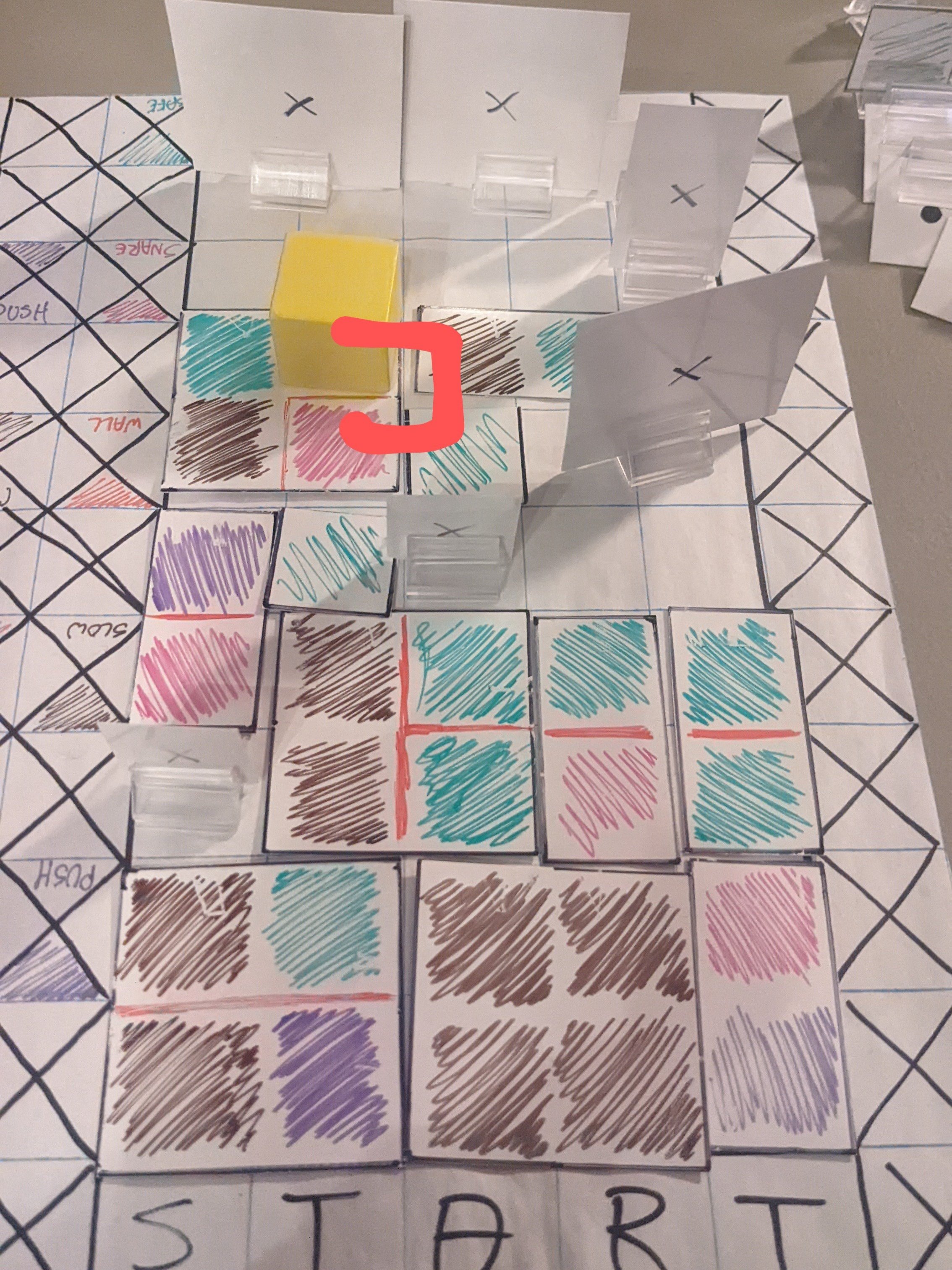
Turn 7 - Yellow
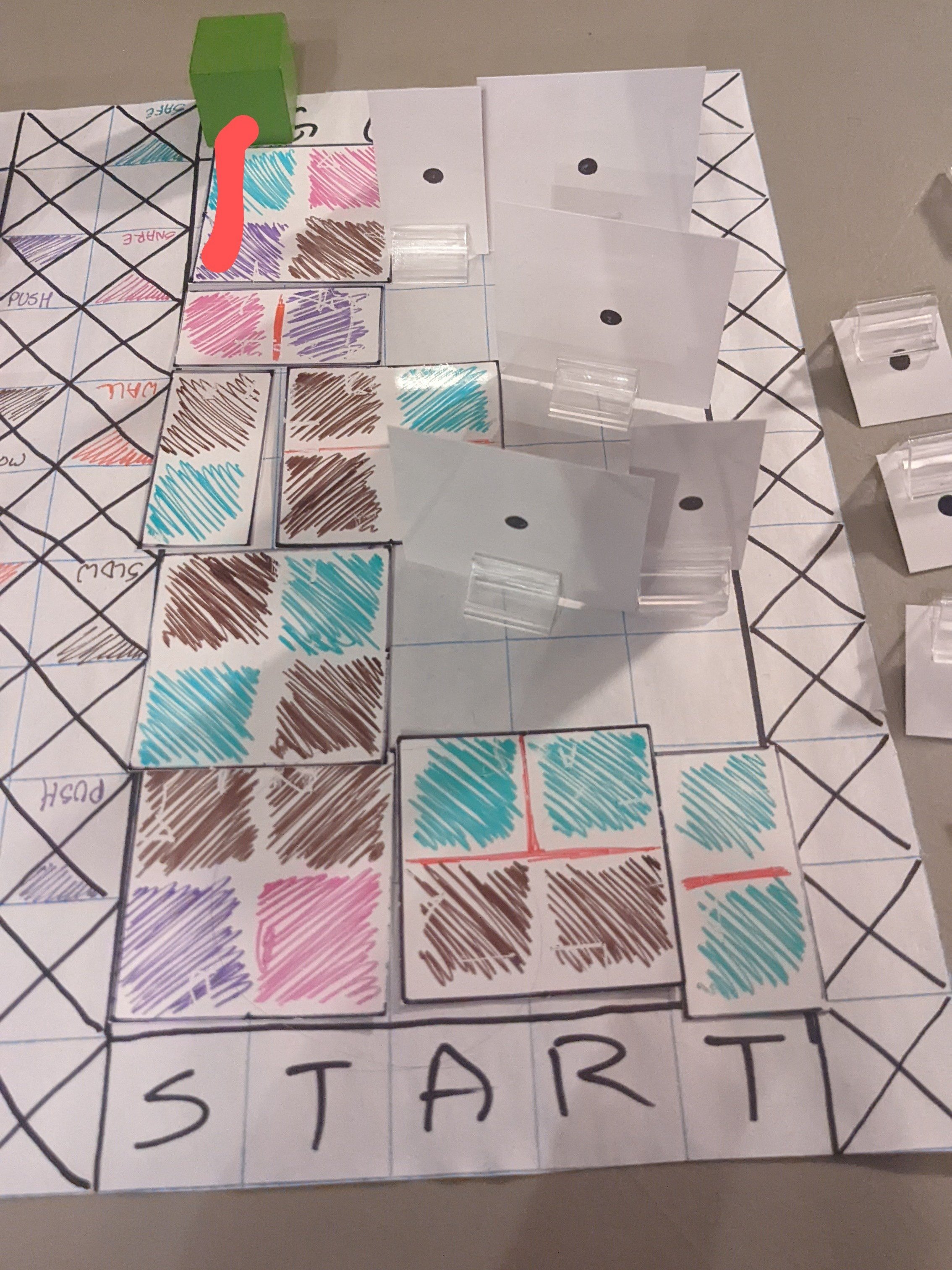
Turn 8 - Green
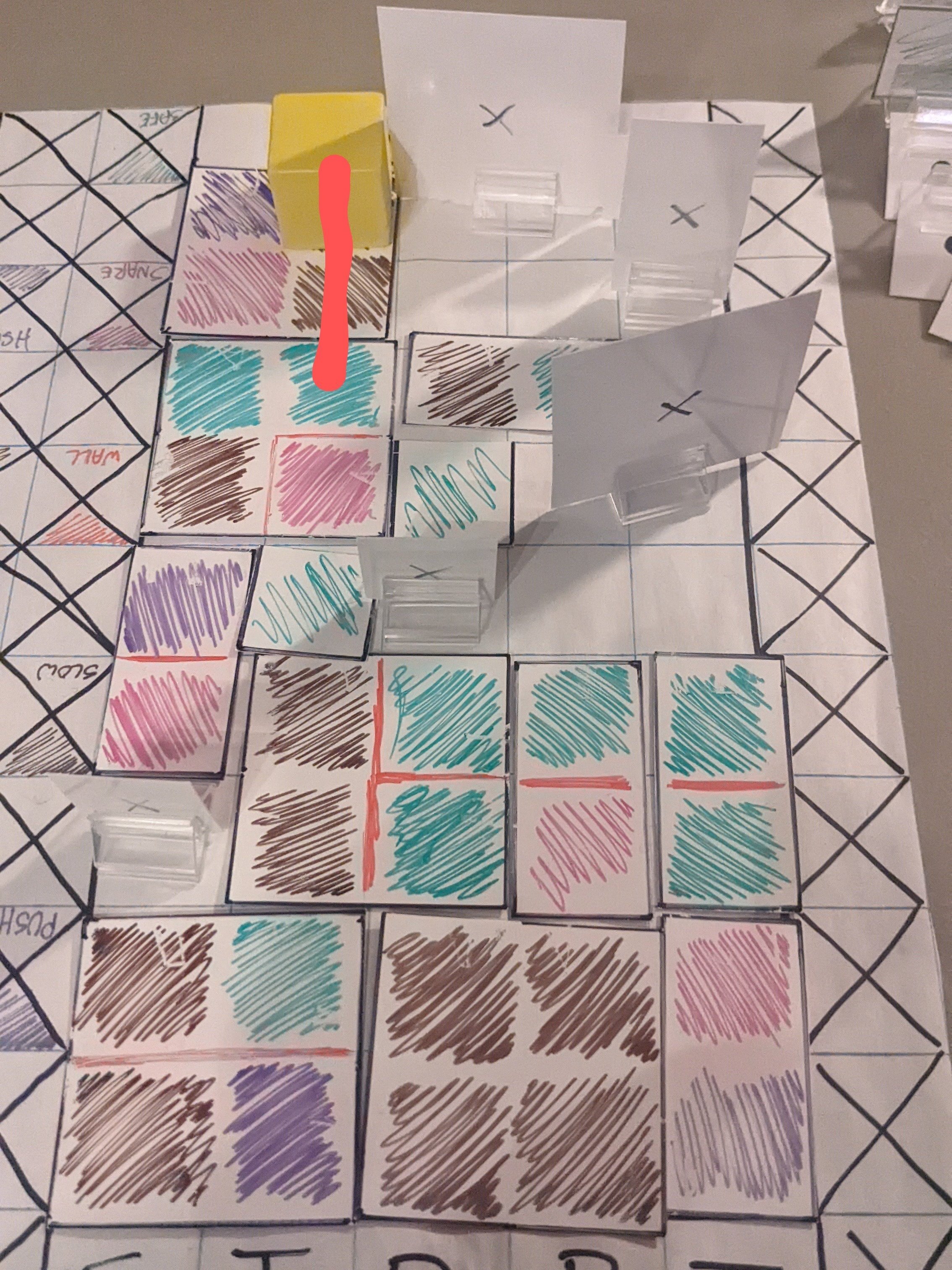
Turn 8 - Yellow
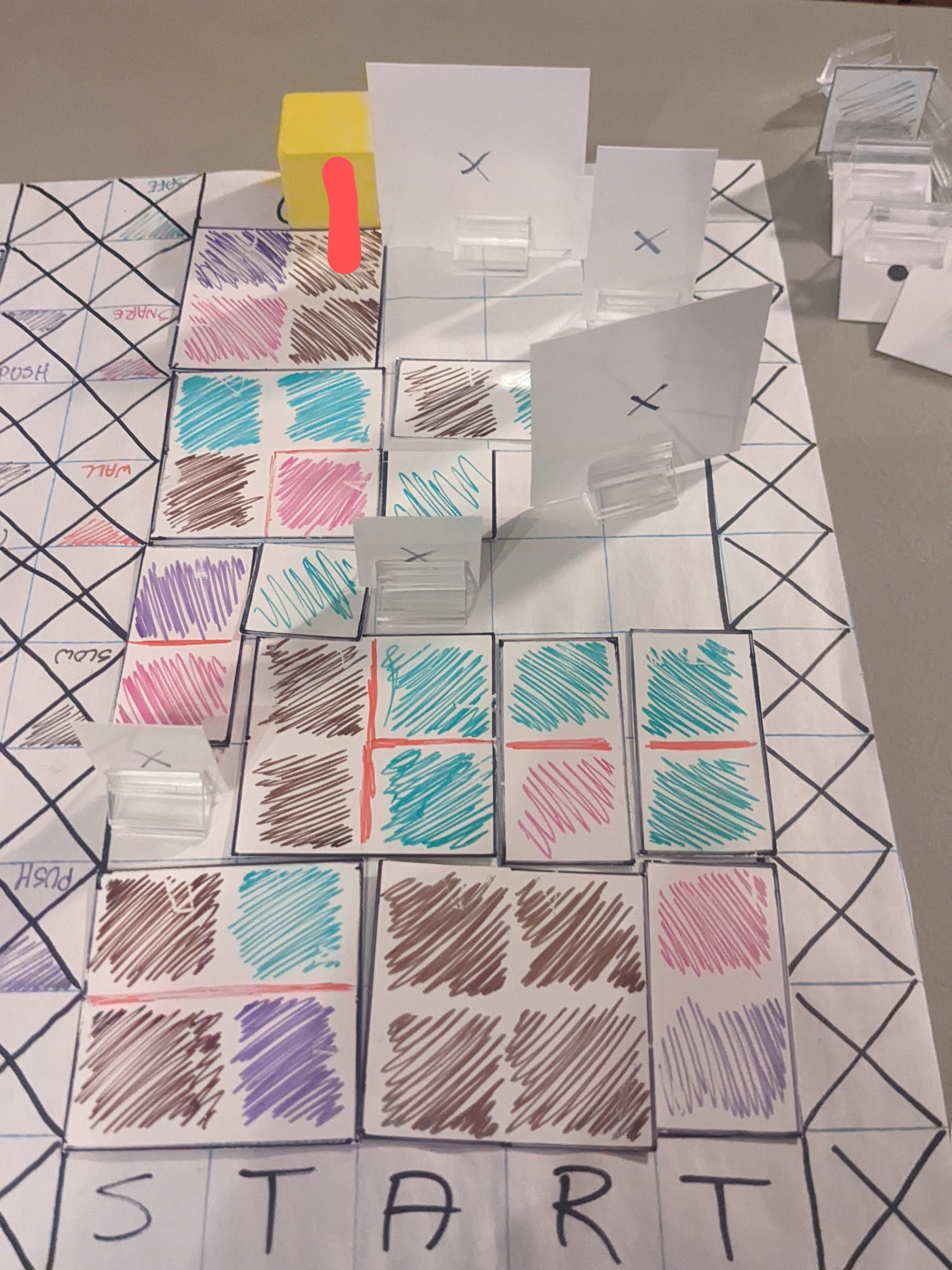
Turn 9 - Yellow



